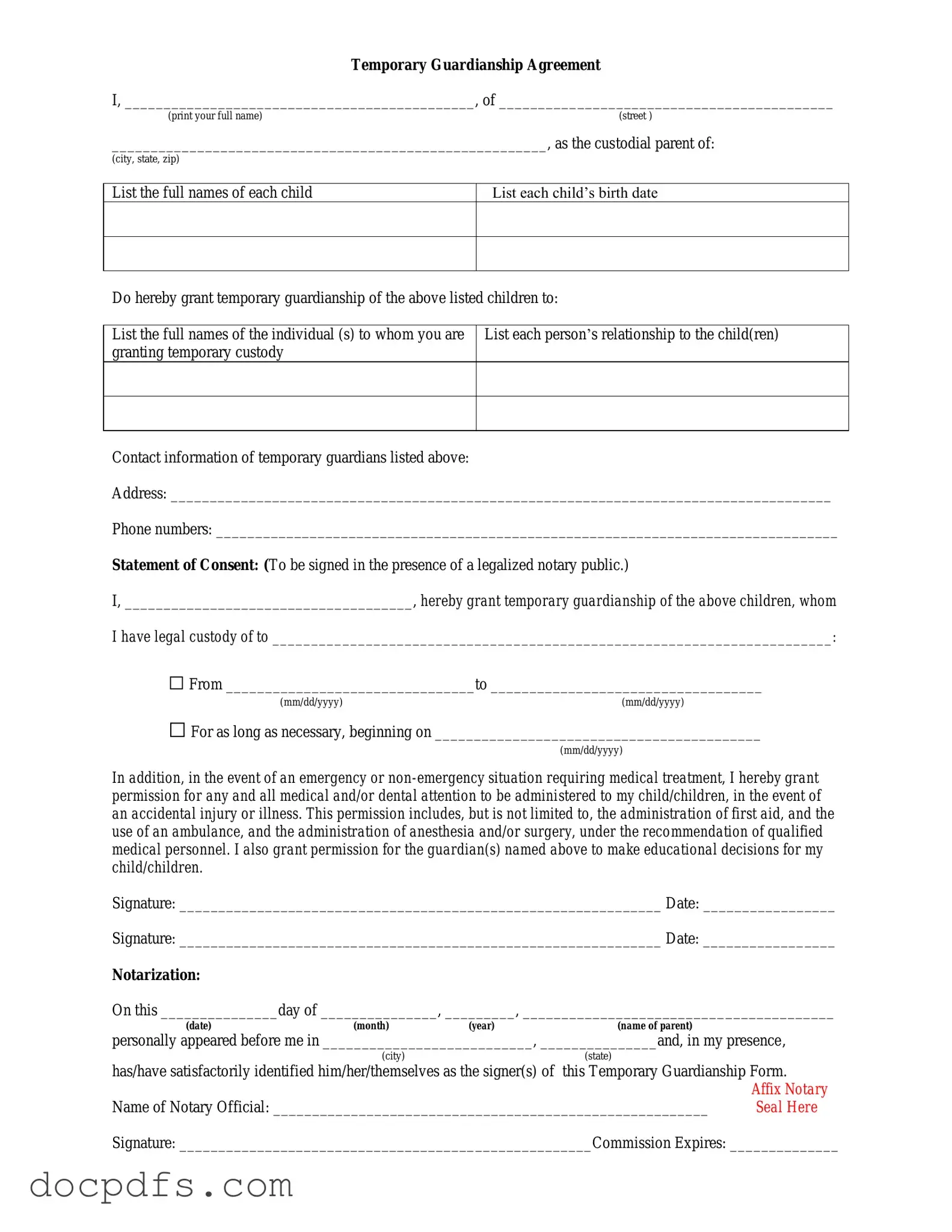When navigating the complexities of family law, understanding the Temporary Custody form is essential for parents and guardians seeking short-term arrangements for children. This form plays a crucial role in establishing who will care for a child when the primary custodial parent is unable to do so, whether due to emergencies, travel, or other unforeseen circumstances. It outlines the rights and responsibilities of the temporary custodian, ensuring that the child's well-being remains the top priority. Additionally, the form requires pertinent information about the child, the custodial parent, and the temporary custodian, fostering clear communication and accountability. By filling out this form, parents can create a legally recognized agreement that not only protects their child’s interests but also provides peace of mind during challenging times. Understanding its components and implications can empower families to make informed decisions that best serve their children’s needs.
